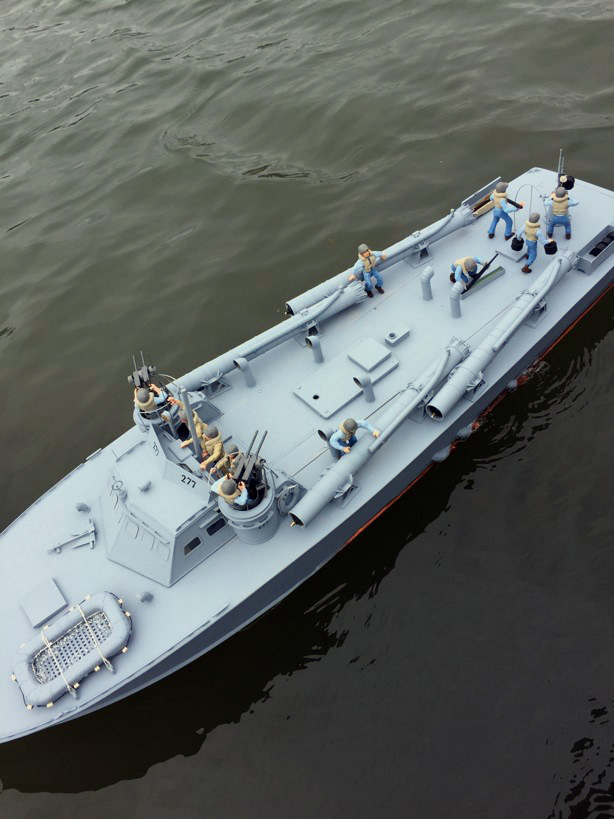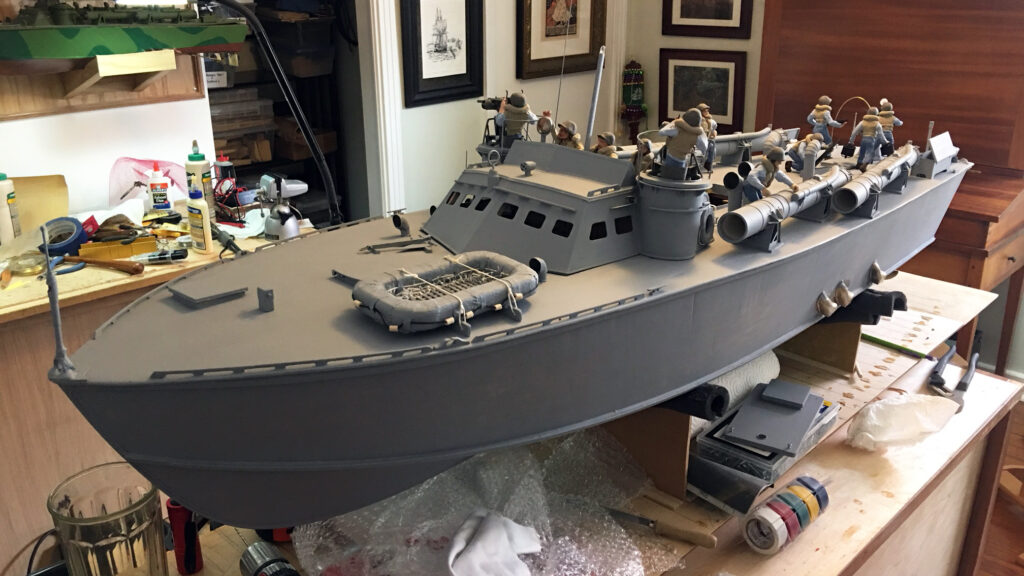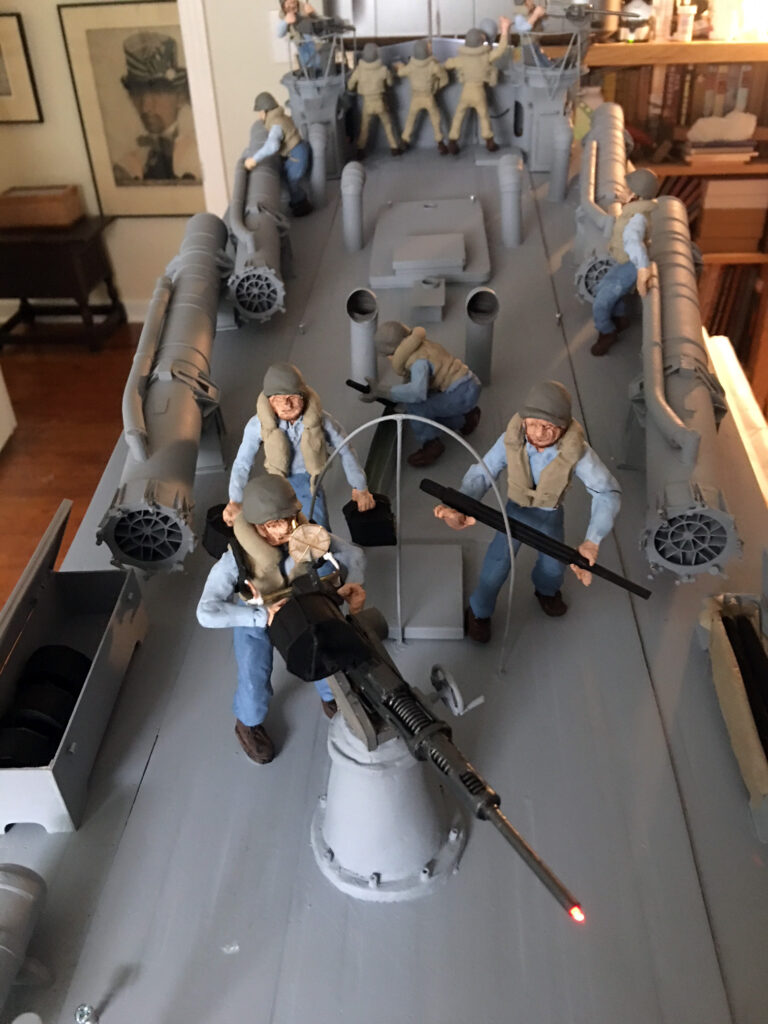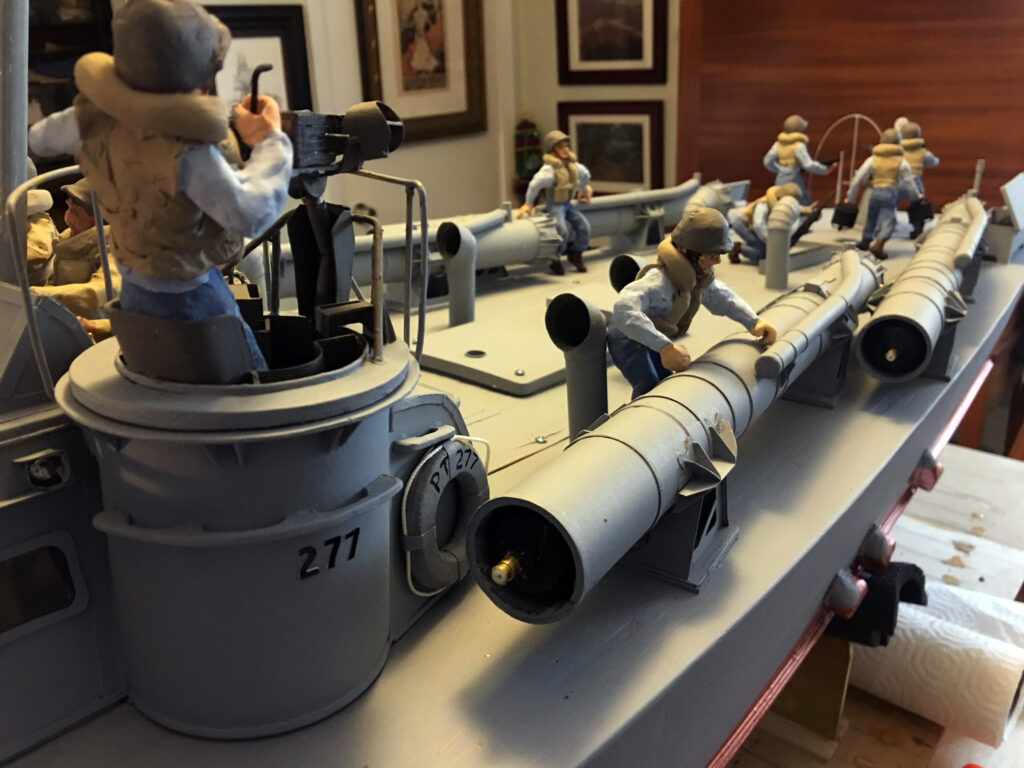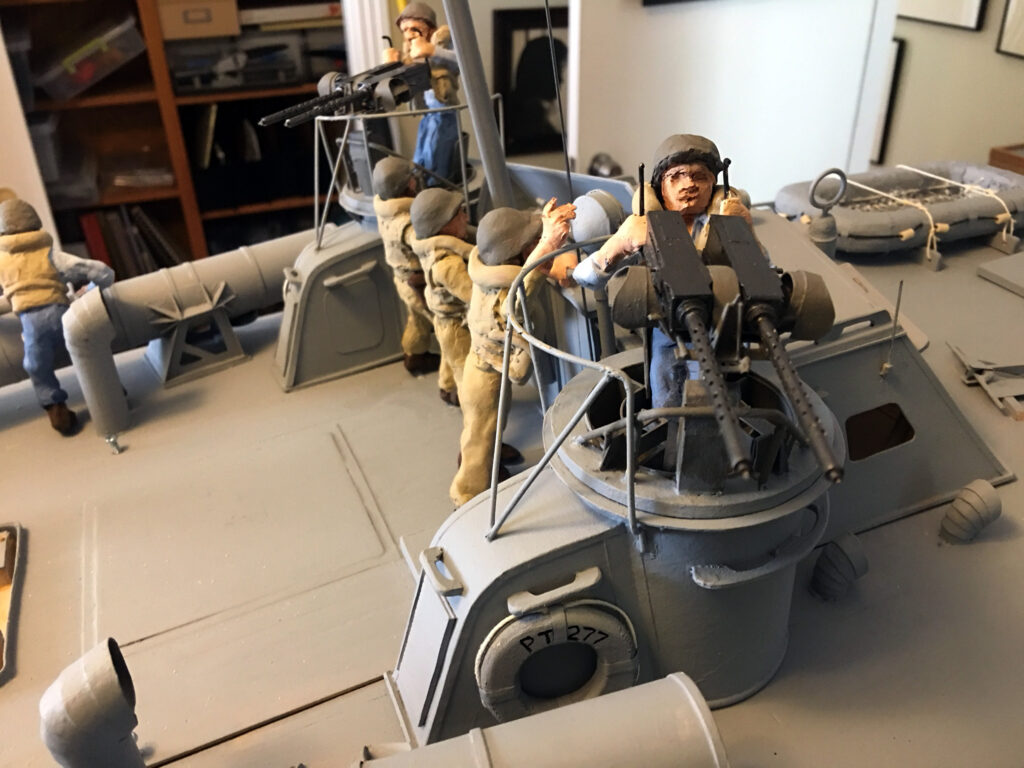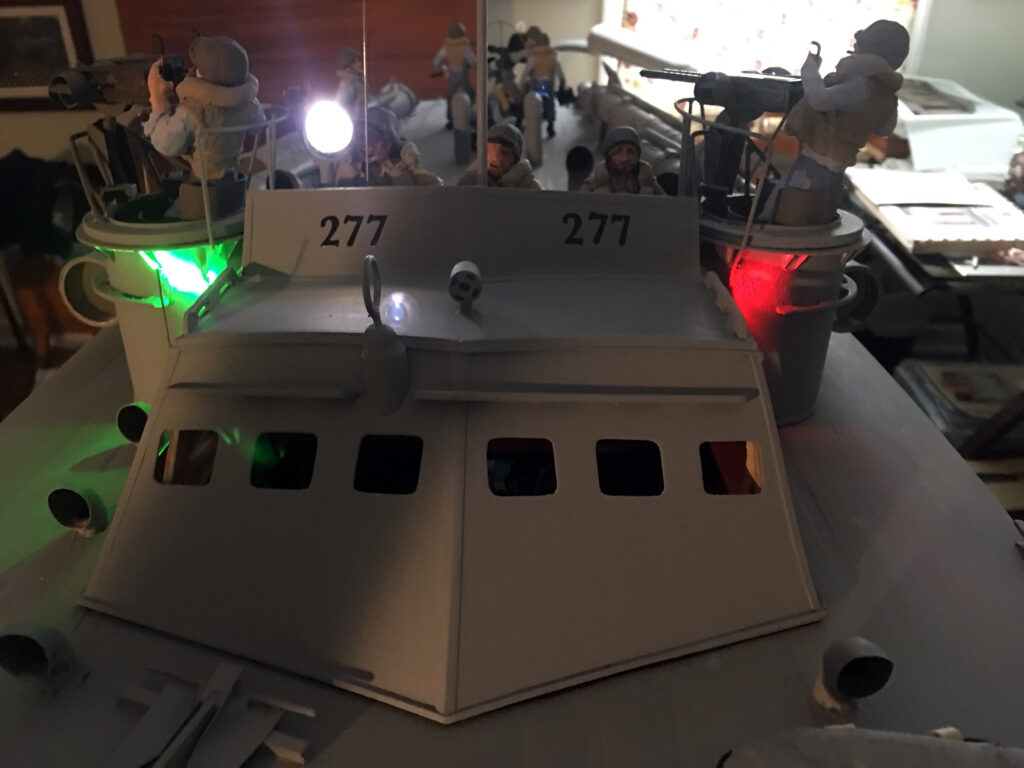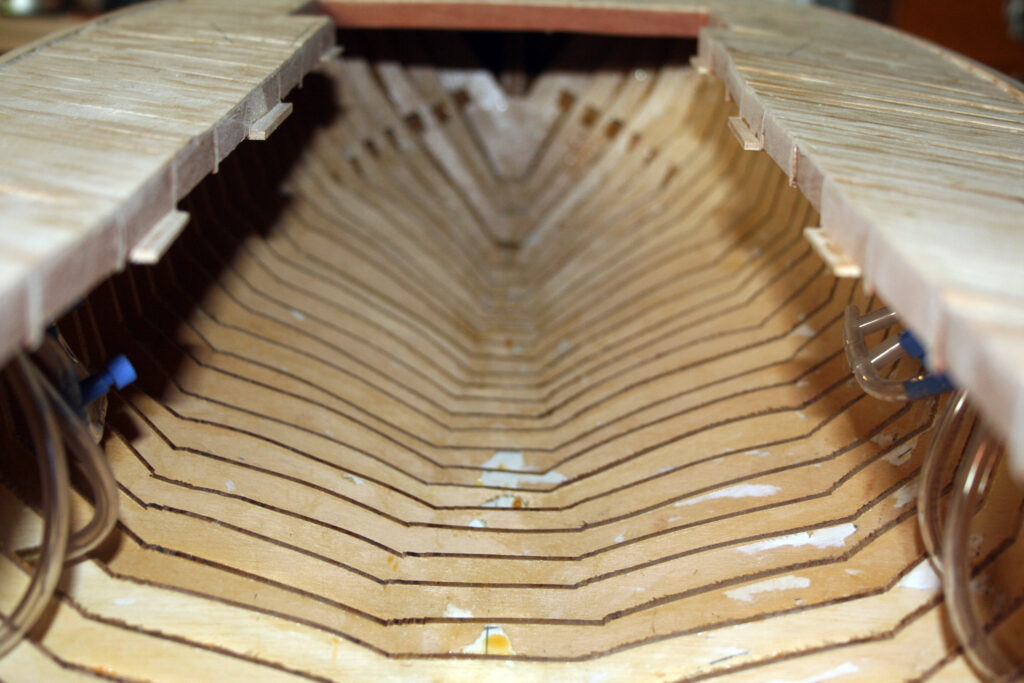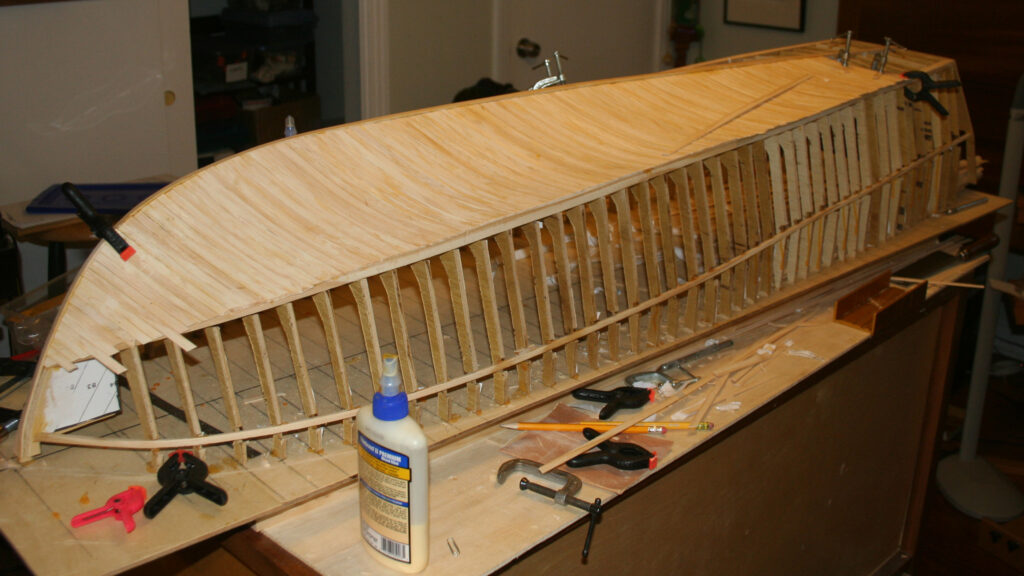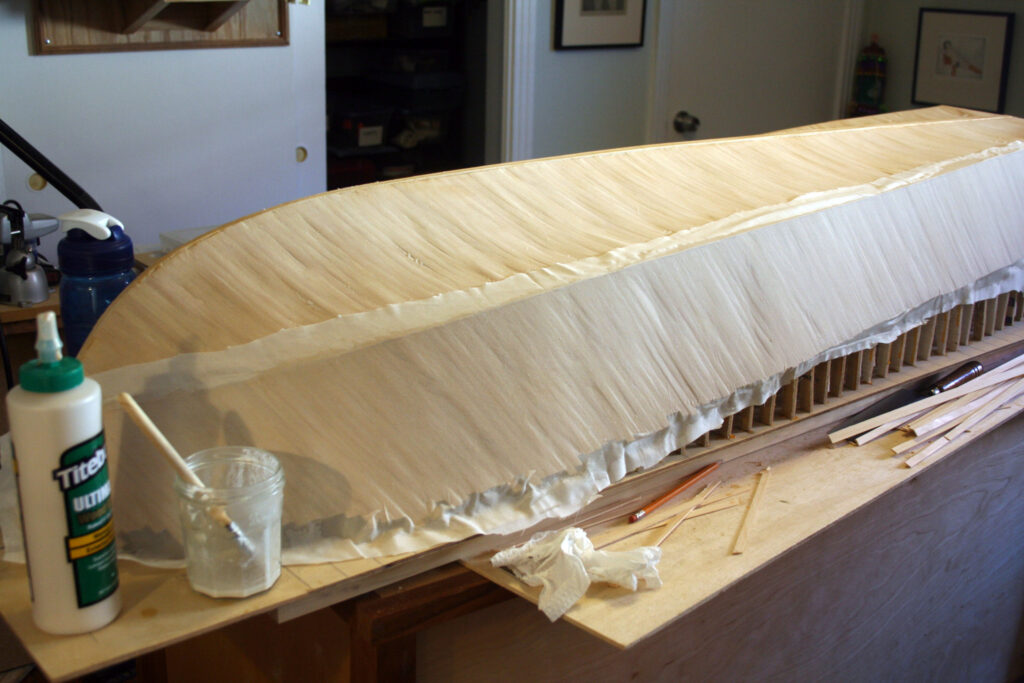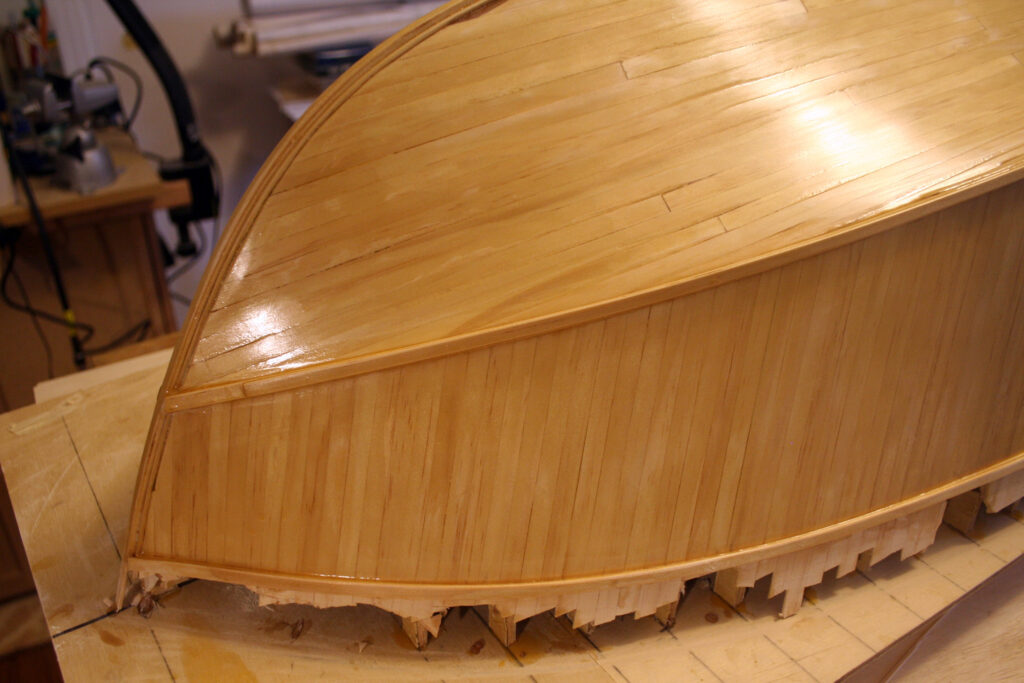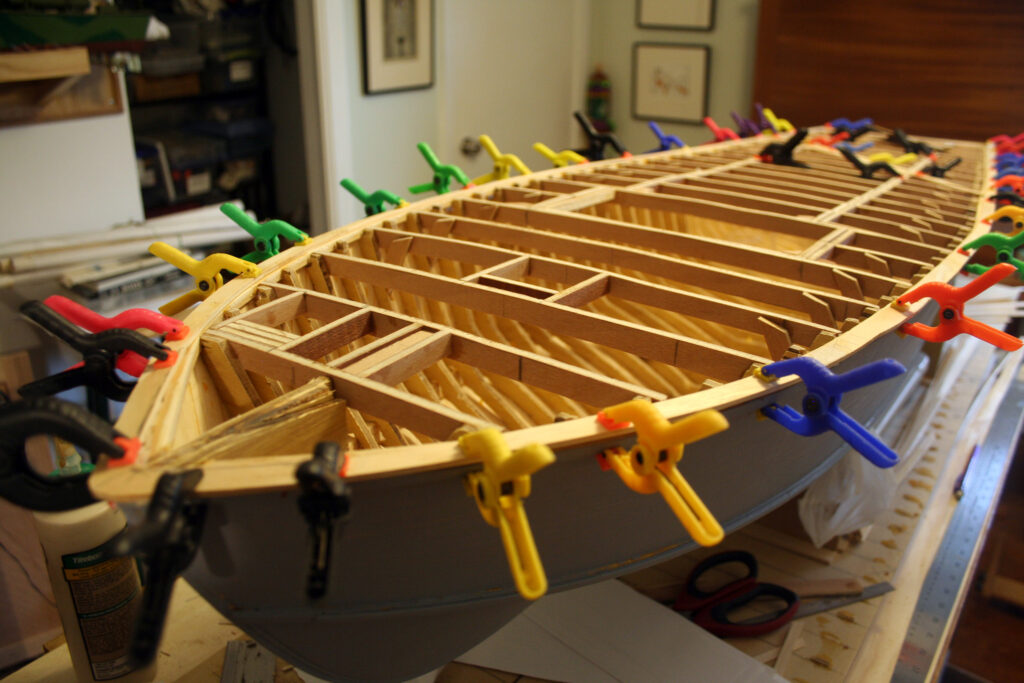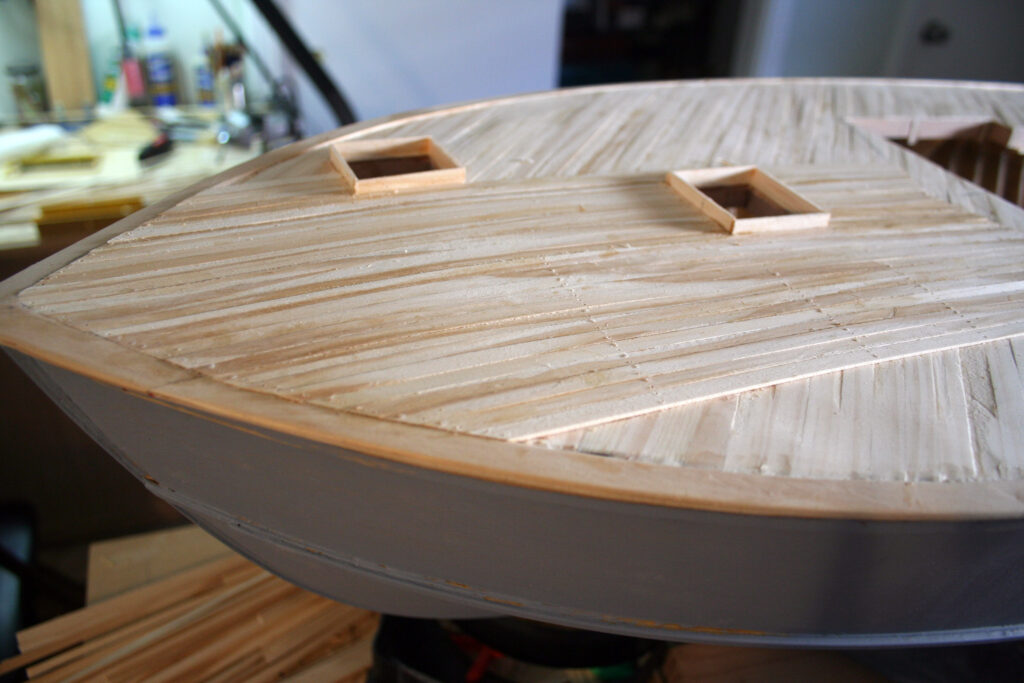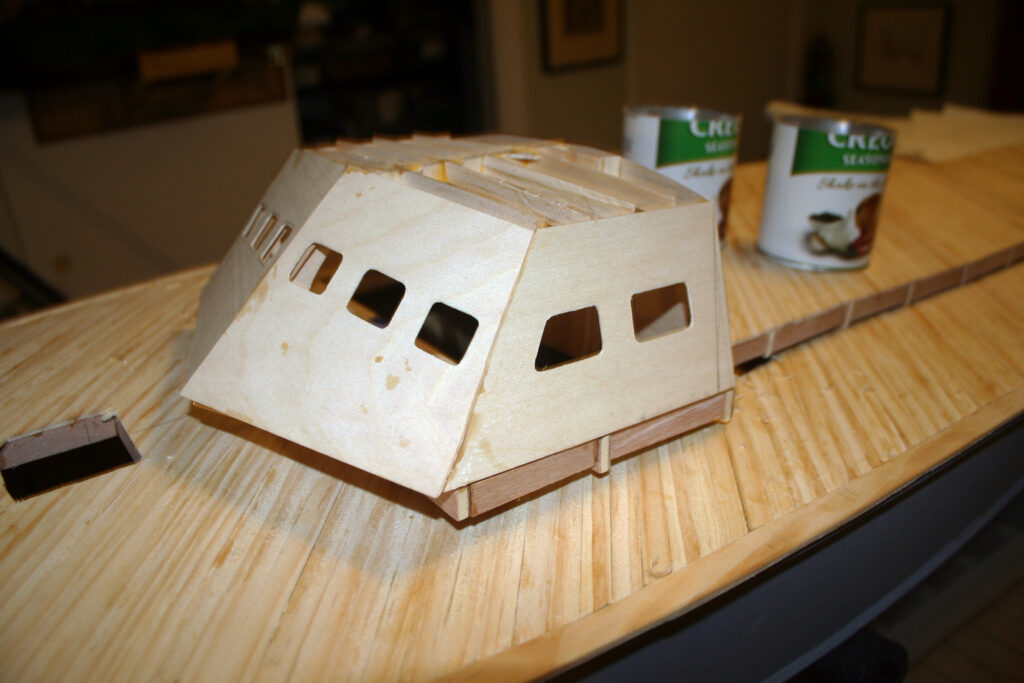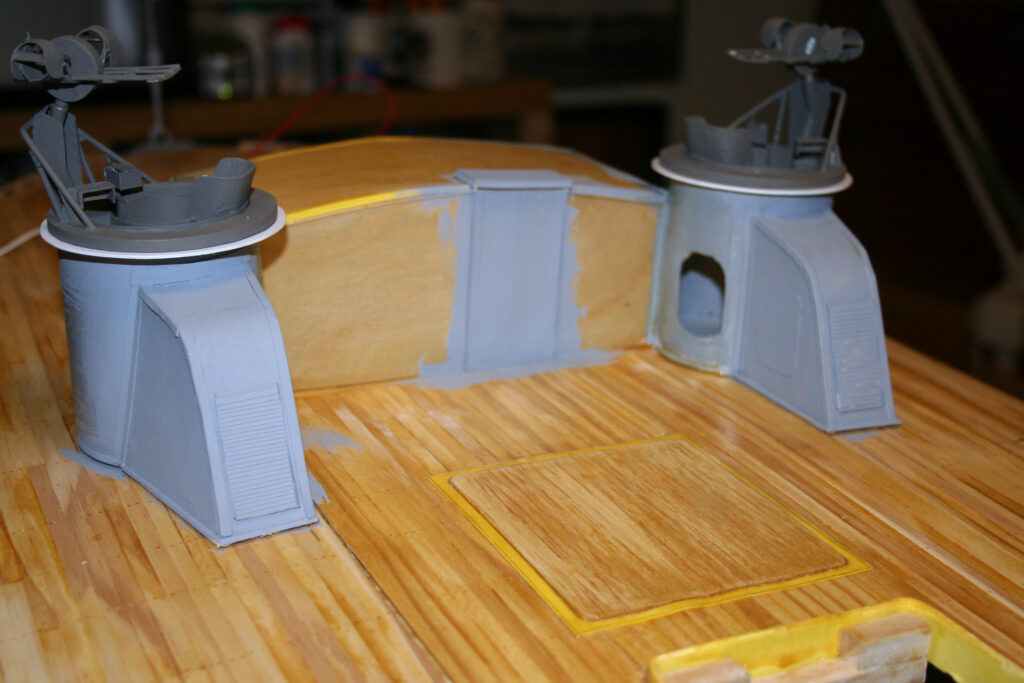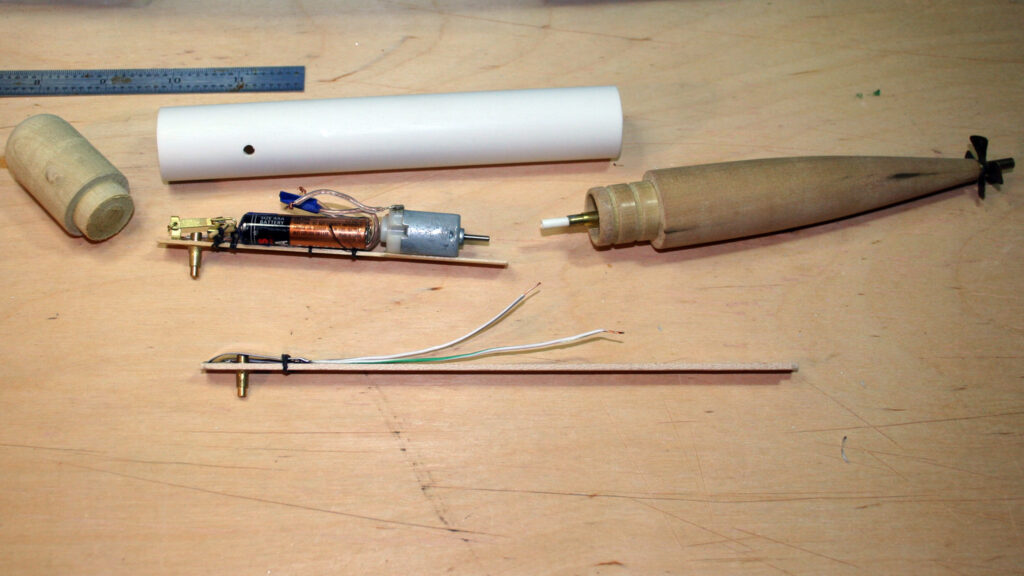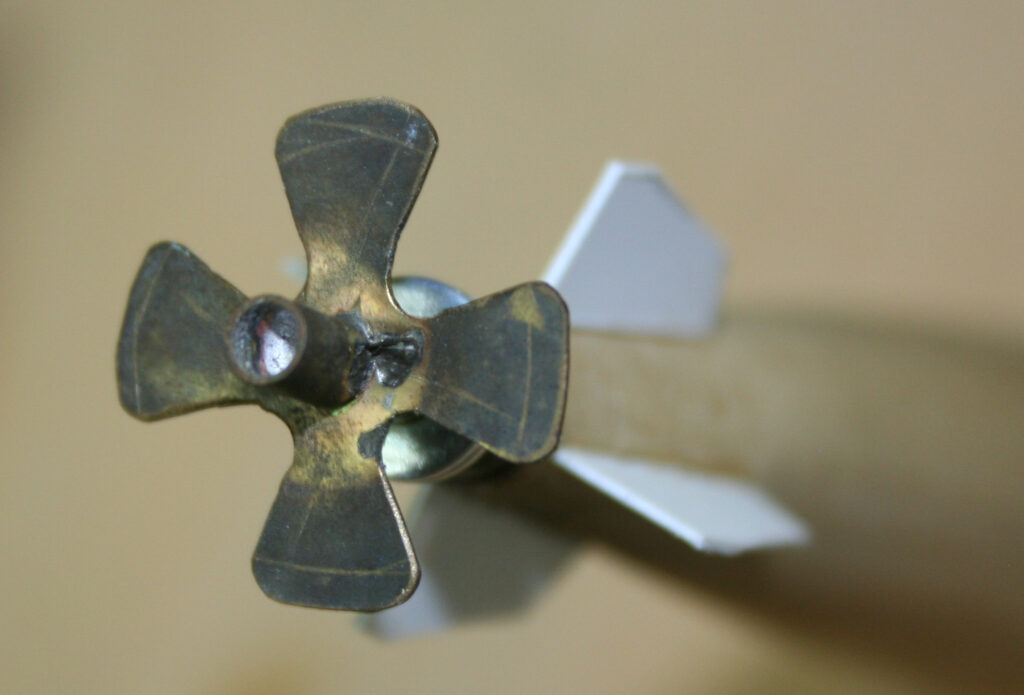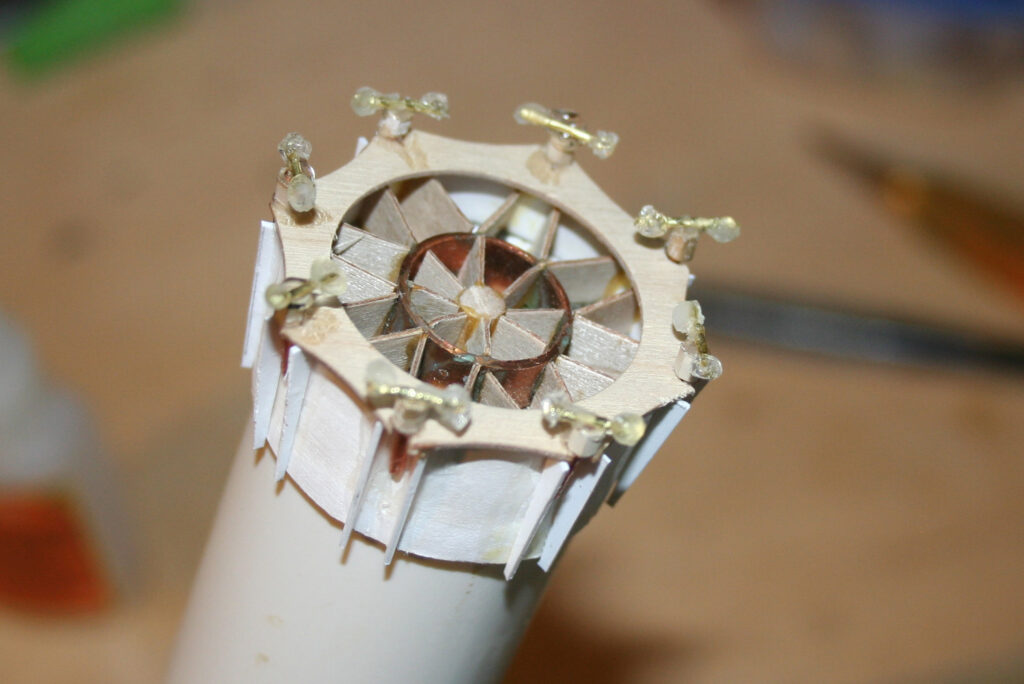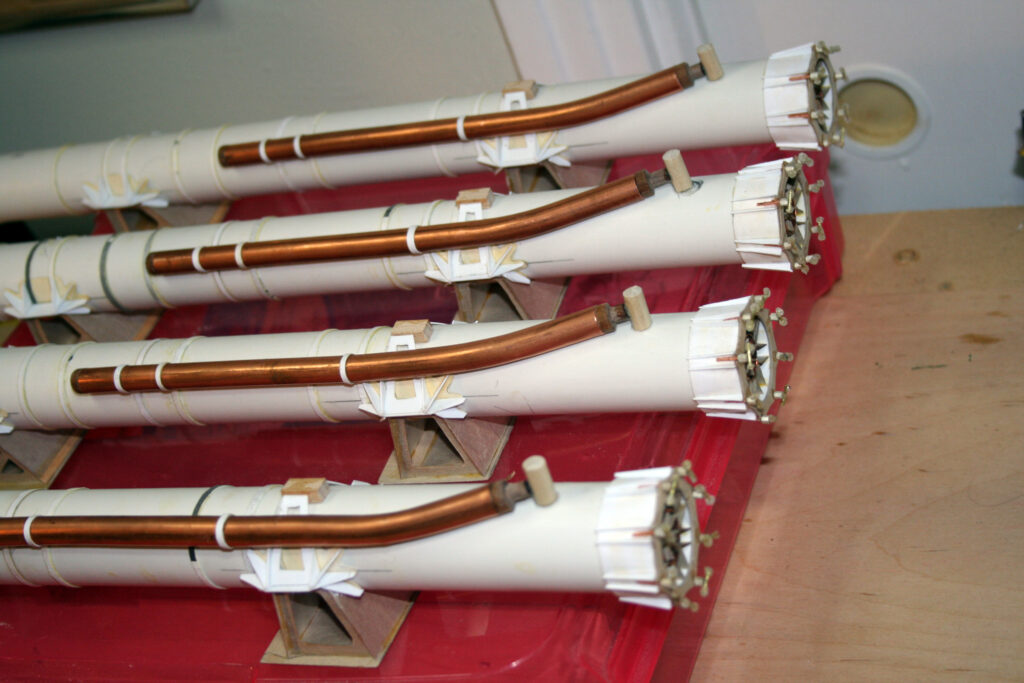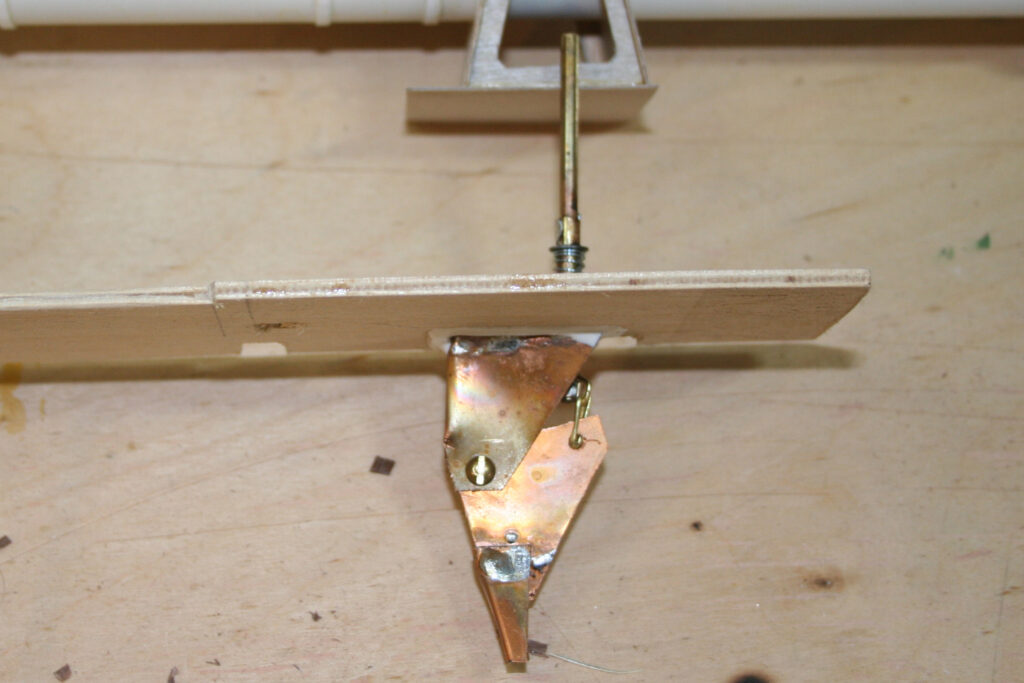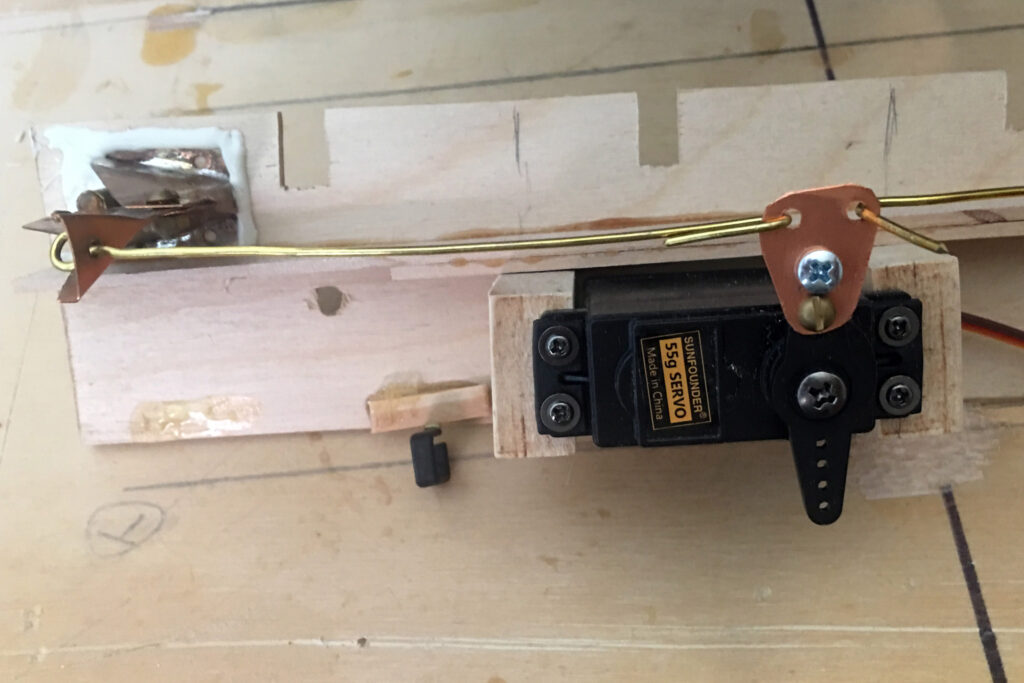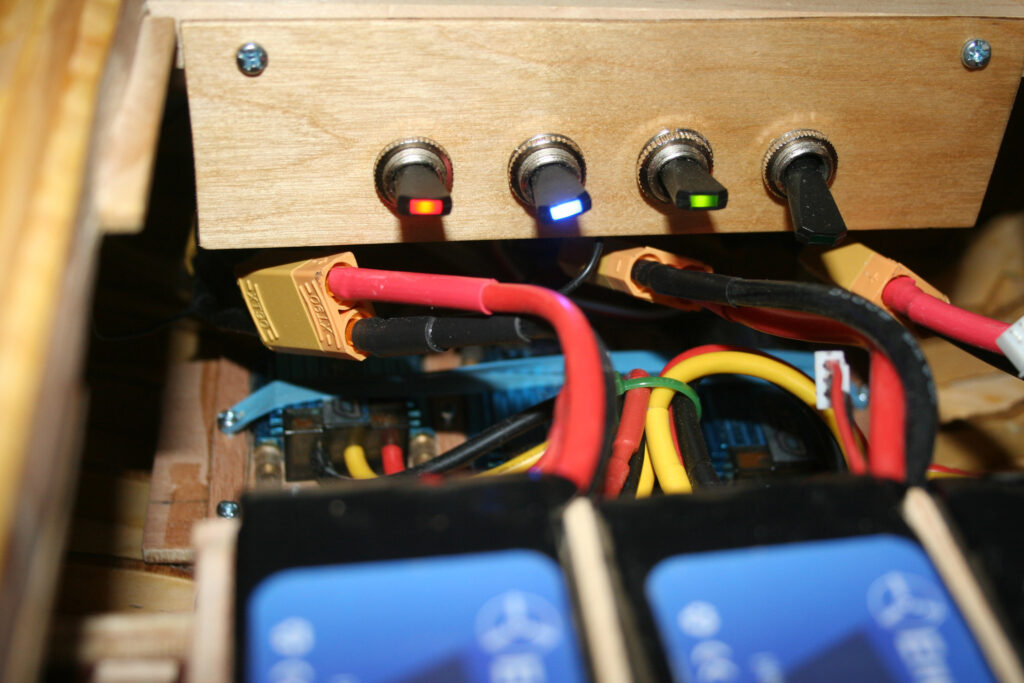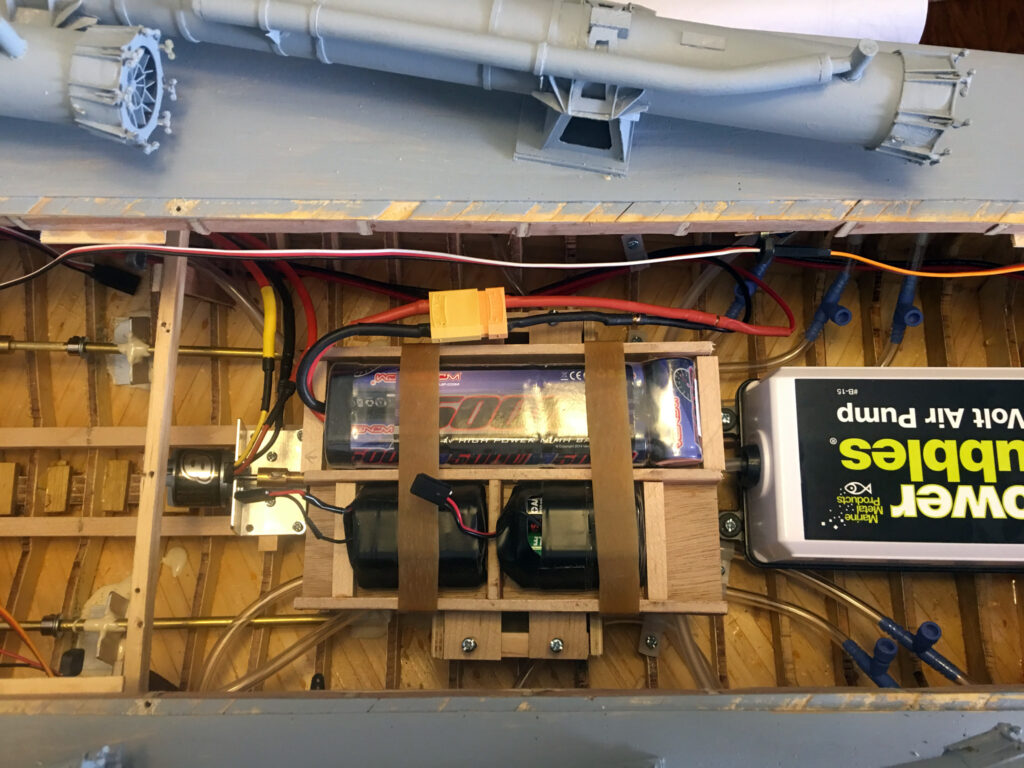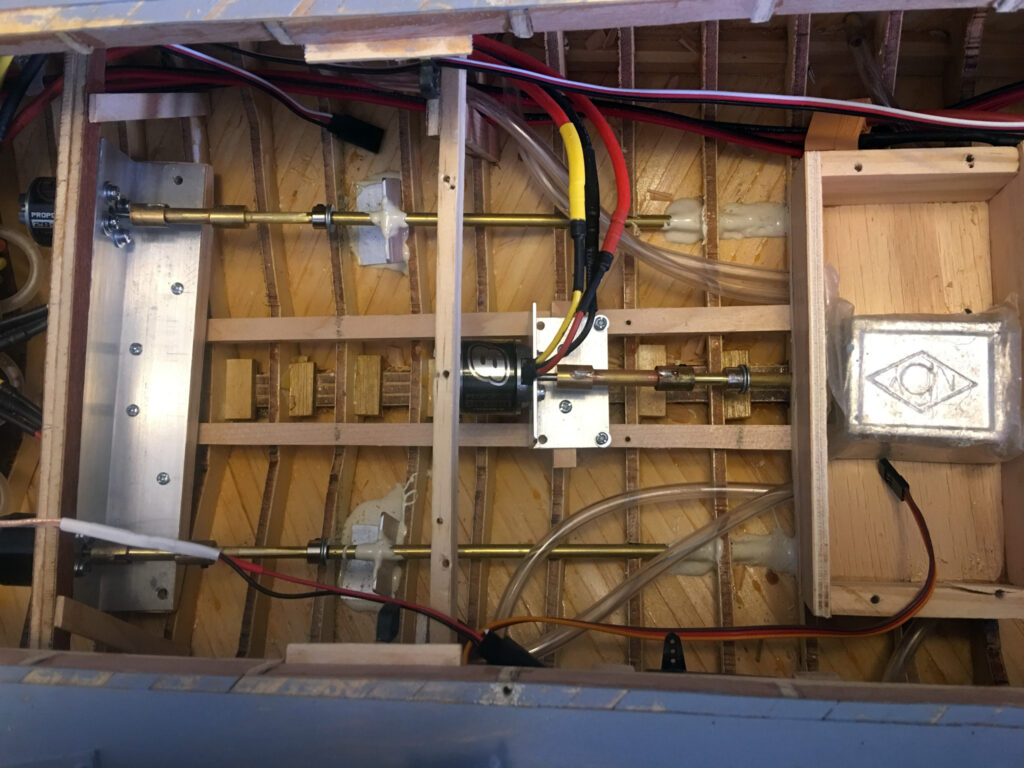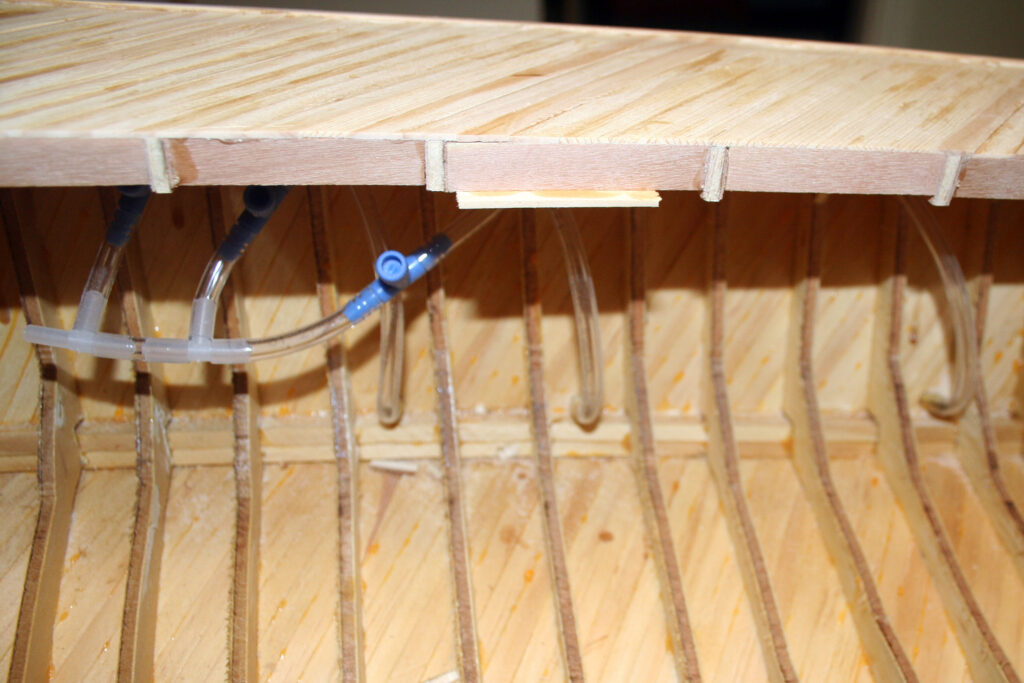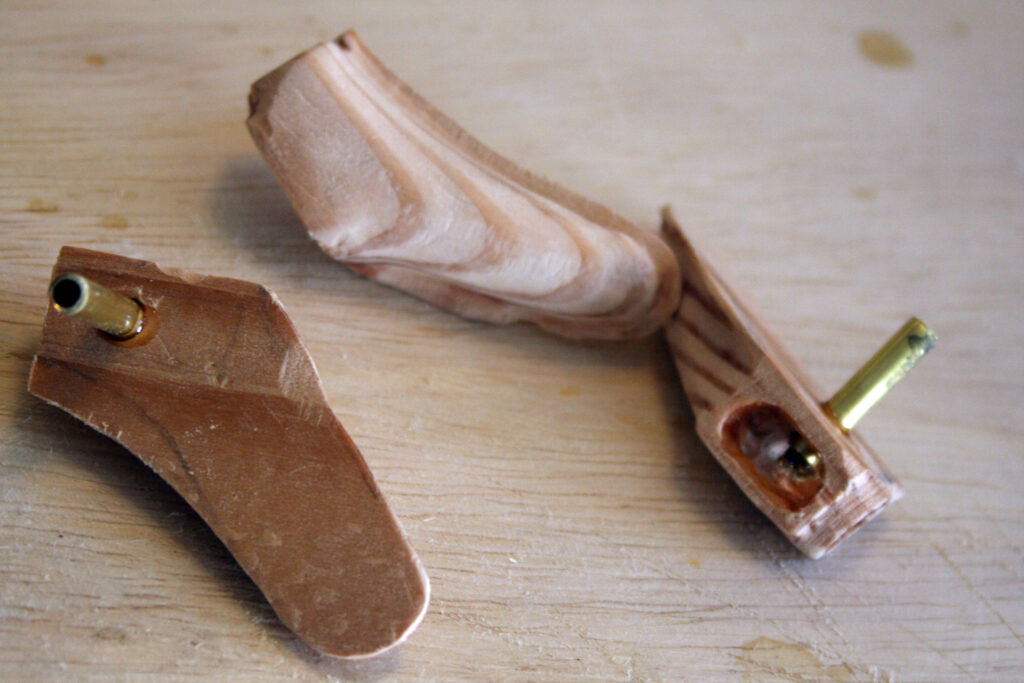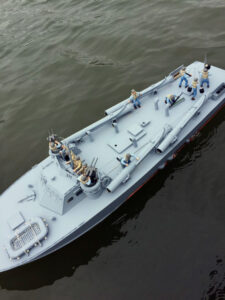
by Gene Andes
Categories:
- Build type: [Scratch]
- Material: [Wood]
- Scale: [1:16 (3/4" = 1')]
- Subject Type: [Torpedo Boat]
- Era: [1914-1945]
- Nationality: [United States]
- Propulsion: [Gasoline] [Internal Combustion] [Propeller]
About the model
After some runs of the 1:32 scale boats on the Bayou, I decided to make a larger PT boat. Since the Higgins boats were built in New Orleans and launched into Bayou St. John, it seemed most appropriate to model a Higgins boat.
The boat was built using plywood for frames and a double layer of pine planks for the hull, much as the originals. There are numerous shots below of the construction of the model. The hull had a layer of cotton cloth glued to the first layer of planking with waterproof glue, then the second layer was applied and sealed with six coats of marine spar varnish. Final coat was exterior latex in navy gray color. After installation of stuffing boxes, exhaust tubing, and rudder box, the inside was sealed with a layer of epoxy, with extra material used at any potential weak points.
The power was three separate air cooled engines each with a separate LiPoly battery, separate speed controller and each direct-driving a propeller.
There was an air pump to create the characteristic bubbling of the side exhausts of the Higgins boats with its own 11 V LiPoly battery.
A separate NiCad battery pack (~4.8 v) powered an Ardinuo board which runs a program to activate LED lights to simulate gun flashes and also control running lights, mooring lights, and a search light. A panel of RC controlled switches activated the various components and the Ardinuo individually.
The torpedoes were powered by small electric motors running off a rechargeable LiPo 1.77 v battery. The motor was kept turned off by a magnetic switch and when the torpedo was launched from the tube, by a spring, the switch turned the motor on. The torpedoes were kept in the tubes by metal pins, which when pulled by a RC servo, launched the torpedo.
When done, the whole thing weighed about 25 pounds, which was within the weight and buoyancy calculations I had done, and the hull planed very nicely at appropriate speed.
On my new web site there is a blog about the construction of the PT 277. My YouTube channel has videos of the boat underway and launching torpedoes.
Model Images
Note the torpedo release mechanism. The servo controlled pivot pulls the rod/pin keeping the torpedo in the tube against the compression spring. There are photos of the mechanism itself, a pre-assembly with the servo, and a final installation.
The motors were designed for model airplane use and actually rotate with the shaft, just like the old radial engines. Better cooling, I guess.
When working on this model, I just scratched the surface of what is available these days from the hobby areas of drones, helicopters, and robotics. One of the most fun parts was the evolution of the torpedo design. I ended up with rechargeable LiPoly 3.77 V batteries controlled by a magnetic switch running tiny electric motors, all costing a few dollars. I thought briefly about making a torpedo with counter rotating props and had a preliminary design penciled out, but came to my senses.

